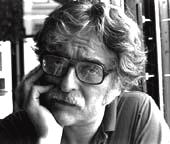The last two columns have been about (1) the advantages of digital cameras over film cameras and (2) the advantages of film cameras over digital ones. This has generated a lot of emotionally charged email. Apparently, it is no longer important what is in front of the camera - only whether it is recorded digitally or on conventional film. Unfortunately, there does not seem to be a clear answer on whether the path to take should be digital or film. Obviously, when the final answer emerges many photographers will be damned to hell and others raised to a paradise of pictorial perfection. Life is a little simpler this month. When you compare the digital darkroom to the conventional one, if you shoot in color, and most professionals have to, the digital darkroom wins hands down. The conventional print processes are relatively intolerant of error and limited in image control. Just ask anyone who has tried to do extensive burning and dodging on a color print and watched those areas shift color. Digital printing has clearly become the way to do-it-yourself color printing. No lengthy set up and temperature control. Just a desk with a computer, a scanner and a printer. And, for the first time, easy control of contrast, color balance, and saturation and effective local controls. Perhaps, most important, relatively immediate results that allow you to make the changes you think produce an effective picture. Although the situation is greatly improving, the permanence of the ink jet print is still being looked at by some with a jaundiced eye. For those who feel uncomfortable with ink jets of their masterpieces, digital and scanned images can be exposed onto conventional materials with systems that use the digital info to guide three color lasers. You're not going to do it in your office, but a number of labs provide the service. Because of the control that computer printing offers, there are a number of photographers who shoot conventional film, have it scanned digitally and digitally printed on conventional materials. Confusing, eh? Black and white prints are a different story, especially big prints from little negs. The majority of my black-and-white prints are digital. But a 16x20 or 20x24 print from a 400 speed, 35-mm b&w film has qualities that the computer print doesn't have. There are a number of reasons for this.A properly developed 400 speed black-and-white film has "sharpness" attributes that you would associate with a 50 or 64 speed color transparency film. It's a quality you don't lose at higher magnifications with a well maintained, high quality, conventional enlarger. The more affordable scanners don't deliver the results of a top of the line drum scanner or a pseudo-drum like the Imacon 848. The bigger the negative, the better, for many of us. Ink jet printers have a problem with metamarism, that is black-and-white prints show significant color shift under different lighting conditions. The prints can't approach the lasting qualities of a properly processed silver print. Special "black only" ink sets, longer lasting inks with a higher percentage of pigment, and even black-only printing are putting a significant dent in these problems. But, as of now, it's a big dent, not a complete solution. Of course, this all presumes a top quality film negative. That's not always the case, especially in the news business when the competition is rump-bumping you while you try to handhold a thirtieth. And remember, this is all coming out of the mouth of somebody who use to shoot "conflicts" and then come home, shoot an 8x10 view and make platinum prints. Put it this way - I'm an old fashioned boy; I love big silver prints; but I'm not such a fool as to not take advantage of computer retouching with pictures of my wife. © Bill Pierce |
|
|
Write a Letter
to the Editor |
